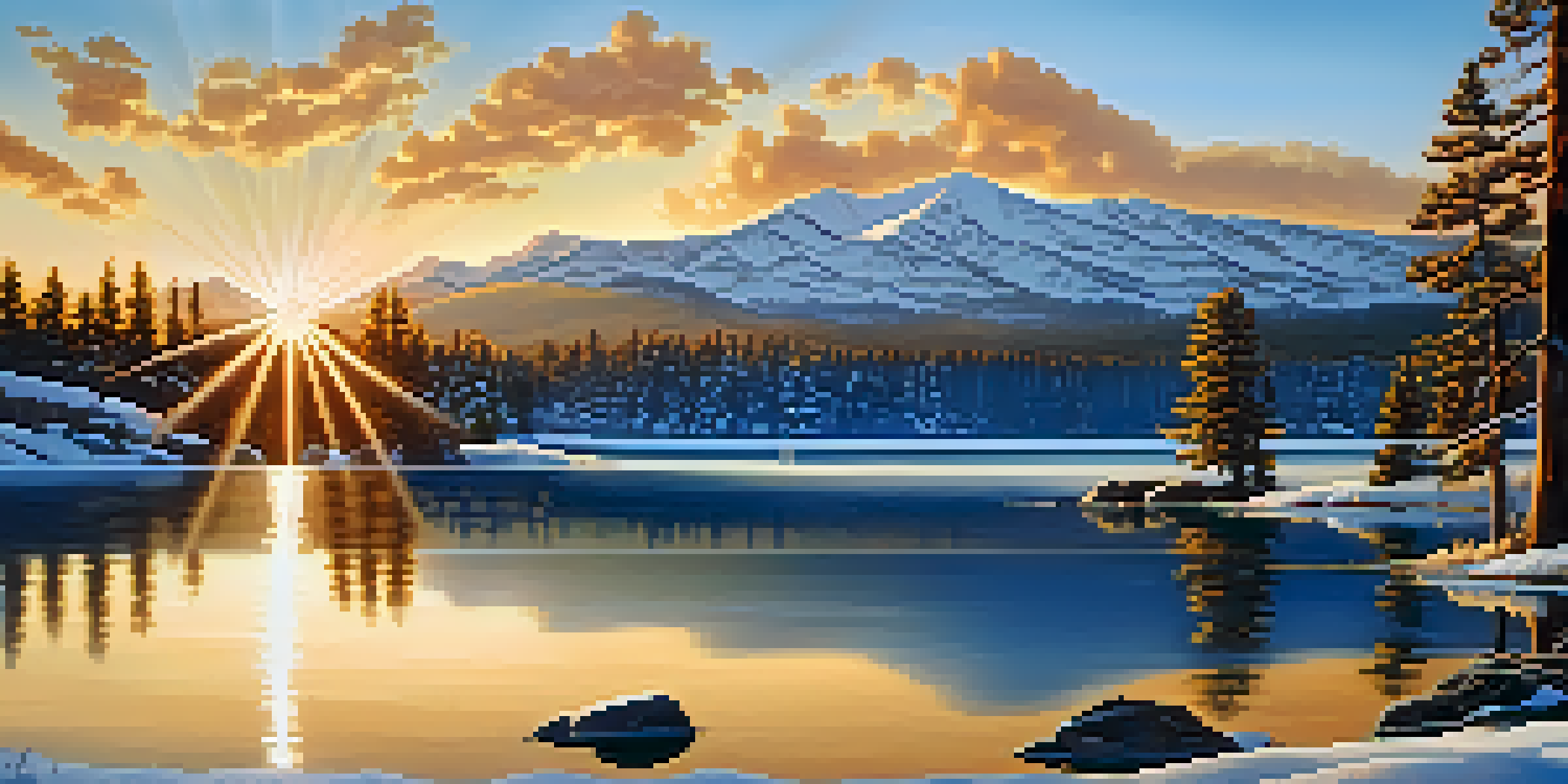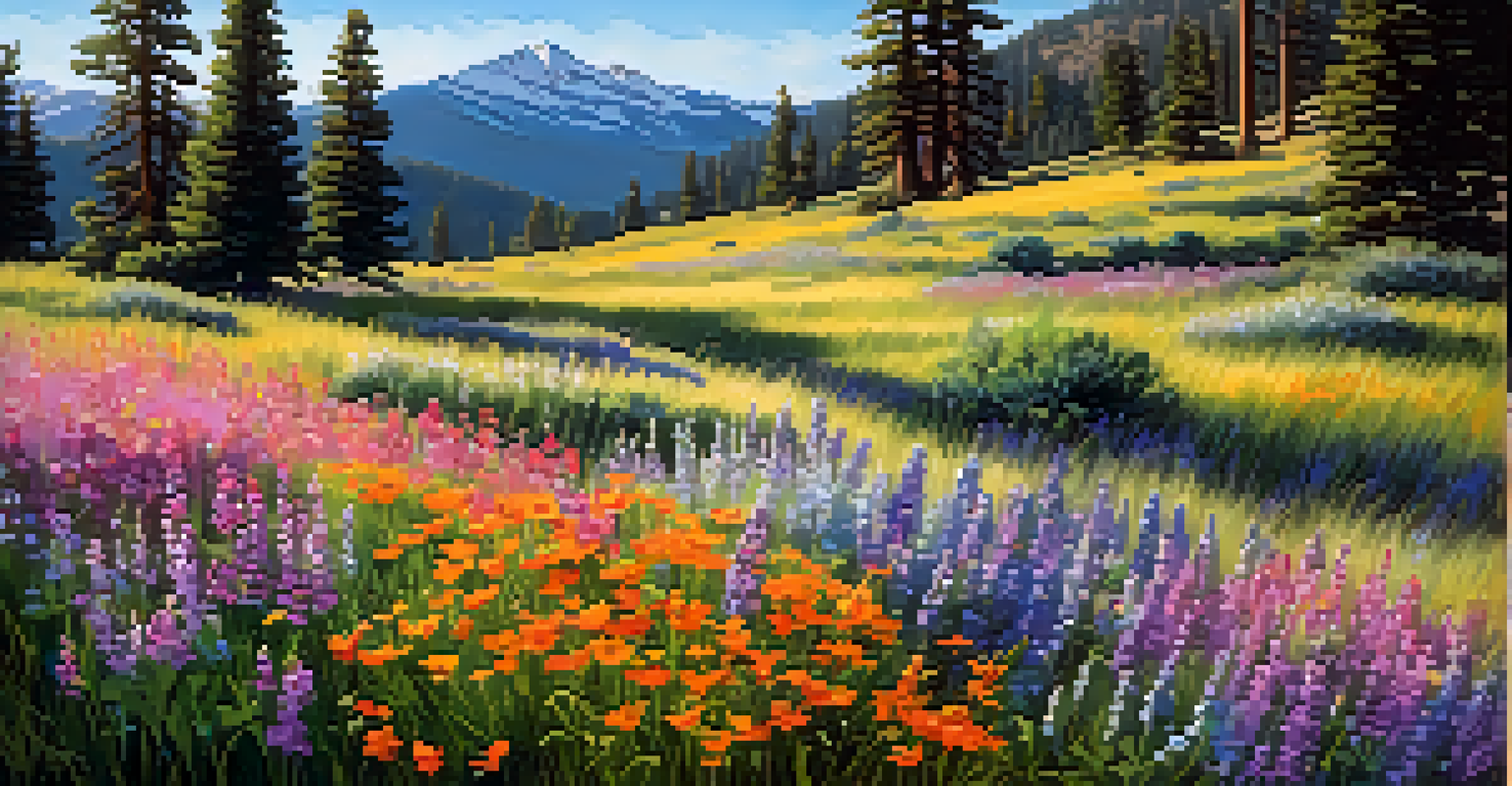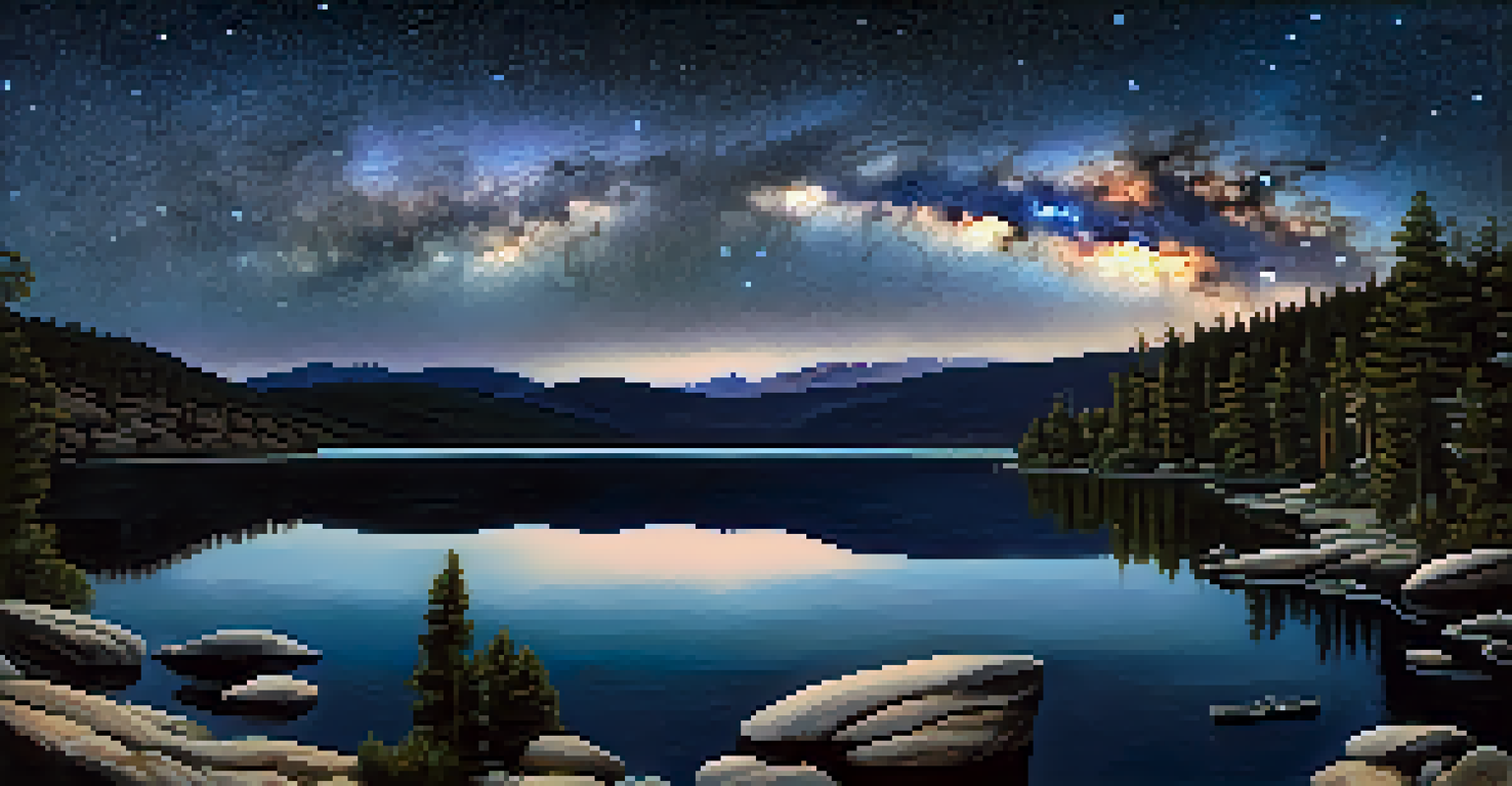Exploring Big Bear: A Photographer's Guide to Stunning Views

Why Big Bear is a Photographer's Paradise
Big Bear Lake, nestled in the San Bernardino Mountains, is a dream destination for photographers. With its stunning landscapes, vibrant wildlife, and seasonal beauty, it offers a visual feast year-round. Whether you're an amateur with a smartphone or a seasoned pro with a DSLR, there's something here to inspire every type of photographer.
Photography is the story I fail to put into words.
The area's diverse scenery ranges from serene lakes and towering pines to rugged mountains and meadows bursting with wildflowers. Each season brings a unique charm: think autumn foliage reflecting on the water or snow-capped peaks under a brilliant blue sky. This ever-changing backdrop not only enhances your portfolio but also provides countless opportunities for creativity.
Moreover, Big Bear's laid-back atmosphere allows photographers to immerse themselves in nature, capturing candid moments without the rush. So pack your gear and get ready to explore; Big Bear’s beauty is just waiting to be framed.
Best Times for Photography in Big Bear
Timing can make or break your photography experience in Big Bear. Early mornings and late afternoons, known as the golden hours, provide the softest and most flattering light. During these times, you'll find the landscape bathed in warm hues, perfect for capturing that dreamy effect in your shots.

Each season also offers unique photographic opportunities. Spring brings vibrant wildflowers, summer offers lush greenery, autumn showcases fiery foliage, and winter transforms the landscape into a snowy wonderland. Planning your visit around these seasonal highlights can help you capture the essence of Big Bear in all its glory.
Big Bear: A Photographer's Dream
With its diverse landscapes and seasonal beauty, Big Bear Lake inspires photographers of all skill levels.
Don’t forget about weather conditions either! A bit of fog can add an ethereal quality to your photos, while a clear sky allows for breathtaking sunset shots. Keeping an eye on the forecast can guide your shooting schedule and enhance your overall experience.
Top Photography Locations Around Big Bear Lake
When it comes to capturing stunning views, certain locations around Big Bear Lake stand out. The lake itself is a prime spot, offering reflections of surrounding mountains and trees. Head to the public docks for a variety of angles or stroll along the shoreline for a more intimate perspective.
In every walk with nature one receives far more than he seeks.
Another must-visit location is the Alpine Pedal Path. This scenic trail meanders along the north shore of the lake, providing breathtaking views of the water and the mountains. It’s also a great spot for wildlife photography, with opportunities to capture birds, squirrels, and other critters in their natural habitat.
For those seeking panoramic vistas, a hike up Castle Rock Trail is worth the effort. The view from the top offers a sweeping overlook of the lake and surrounding mountains, ideal for wide-angle shots. Bring your tripod for long exposure photography, especially during sunrise or sunset.
Wildlife Photography Tips in Big Bear
Big Bear is not only about stunning landscapes; it's also home to diverse wildlife, making it a fantastic location for wildlife photography. Early mornings or late afternoons are prime times for spotting animals like deer, foxes, and a variety of birds. Patience is key—spend time quietly observing your surroundings to increase your chances of capturing the perfect shot.
When photographing wildlife, consider using a telephoto lens to get closer without disturbing the animals. This allows you to capture their natural behavior while maintaining a respectful distance. Additionally, using a faster shutter speed can help freeze the action, especially if you're photographing animals in motion.
Best Times for Capturing Magic
Golden hours and seasonal highlights enhance photographic opportunities, making timing crucial for stunning shots.
Remember to practice ethical wildlife photography. This means respecting the animals' habitats and not feeding them or getting too close. By prioritizing their well-being, you can enjoy a fulfilling photography experience while contributing to the preservation of Big Bear's natural beauty.
Capturing the Night Sky in Big Bear
Big Bear’s high elevation and low light pollution make it an excellent location for astrophotography. The clear night skies reveal a dazzling display of stars, making it a perfect canvas for capturing the Milky Way. To get started, head to the lake's edge or find an open area away from city lights for the best views.
For successful night photography, bring a sturdy tripod and use a wide aperture lens to allow more light in. Experiment with longer exposures to capture the stars in all their glory, but don’t forget to keep an eye on your camera settings to avoid overexposure. Consider using a remote shutter release to prevent any camera shake during the shot.
Additionally, planning your shoot around the lunar calendar can enhance your images. A new moon offers the darkest skies, while a full moon can create interesting shadows and highlights in the landscape. Whichever phase you choose, Big Bear’s night sky is sure to leave you in awe.
Editing Your Big Bear Photos: Tips and Tricks
Once you've captured stunning photos in Big Bear, the editing process is where you can truly enhance your images. Start by organizing your photos and selecting your favorites for editing. Software like Adobe Lightroom or Photoshop offers powerful tools to adjust lighting, colors, and sharpness, allowing you to bring out the best in your images.
Consider using presets to give your photos a consistent look, but don't be afraid to customize them to fit your unique style. Adjusting the contrast and saturation can bring out the vibrant colors of Big Bear's landscapes, while cropping can help focus attention on your primary subject.
Wildlife and Night Sky Photography
Big Bear offers unique experiences for wildlife and astrophotography, encouraging ethical practices and creativity.
Lastly, remember to save your edits in various formats. High-resolution files are great for prints, while more compressed formats work well for social media sharing. With a little editing magic, your Big Bear photos can truly shine, telling the story of your adventures.
Local Photography Workshops and Events
If you're looking to improve your photography skills while exploring Big Bear, consider joining a local workshop or event. Many talented photographers in the area offer classes ranging from beginner techniques to advanced editing skills. These workshops provide hands-on experience and valuable insights into capturing the beauty of Big Bear.
Additionally, check out local photography exhibitions or contests. Participating in these events not only showcases your work but also connects you with fellow photography enthusiasts and professionals. It’s a fantastic way to gain inspiration and learn from others who share your passion for photography.

Don't forget to explore online communities as well. Many photographers share their experiences and tips from Big Bear, creating a wealth of knowledge for newcomers. Engaging with these communities can help you find the best spots and techniques, enhancing your overall photography journey.